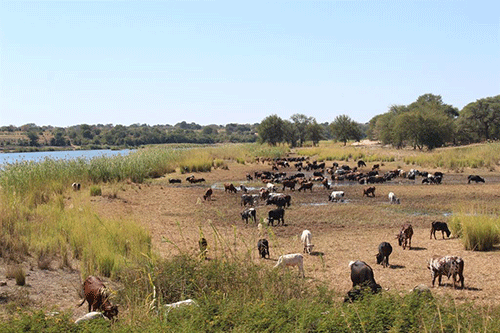The value of exports in April 2022 decreased by 36.4% to N$5.5 billion from N$8.7 billion reported in March 2022. In addition, when compared to N$6.5 billion recorded in April 2021, exports decreased by a notable 15.4%.
According to the Namibia trade statistics bulletin for April 2022, imports stood at N$8.8 billion, reflecting a decrease of 5.2% month-on-month and an increase of 43.1% when compared to the same month the previous year.
Namibia Statistics Agency (NSA) released the bulletin last week, adding that following these movements in both flows, Namibia’s total merchandise trade (exports plus imports) with the rest of the world decreased by 20.3% from its March 2022 level of N$18 billion. When compared to the same month the previous year, total trade increased by 13%.
Looking at the trade balance, according to NSA, during the month under review, Namibia recorded a trade deficit to the tune of N$3.3 billion. This reflects a worsened deficit when compared to the N$619 million recorded the previous month and an inferior trade deficit when compared to a surplus of N$365 million recorded in the month of April 2021. The trade balance compares the country’s trade flow with the rest of the world in terms of export earnings and expenditure on imports. Over the period (April 2021 to April 2022), Namibia recorded a deficit averaging N$2.5 billion and only recorded a trade surplus in April 2021.
Furthermore, taking advantage of the African Continental Free Trade Area (AfCFTA) is Tunisia, which is a country Namibia has trusted for imports since the formation of the AfCFTA in 2018.
“That country has significantly increased its trade since 2018, averaging a total of N$529 million in imports to date, with the highest import value of N$861 million being recorded in 2021. This is a notable increase when compared to the period of 2015 to 2017, which only averaged N$11 million a year,” reads the bulletin.
AfCFTA is a free trade area founded on 21 March 2018, with trade coming into effect on 1 January 2021. The general objective of the AfCFTA is to create a single market for goods and services facilitated by the movement of persons in order to deepen the economic integration of the African continent as well as to enhance the competitiveness of the economies of State Parties within the continent and the global market.
Namibia trades with many African countries, but mainly with South Africa as the principal source and destination of products.


